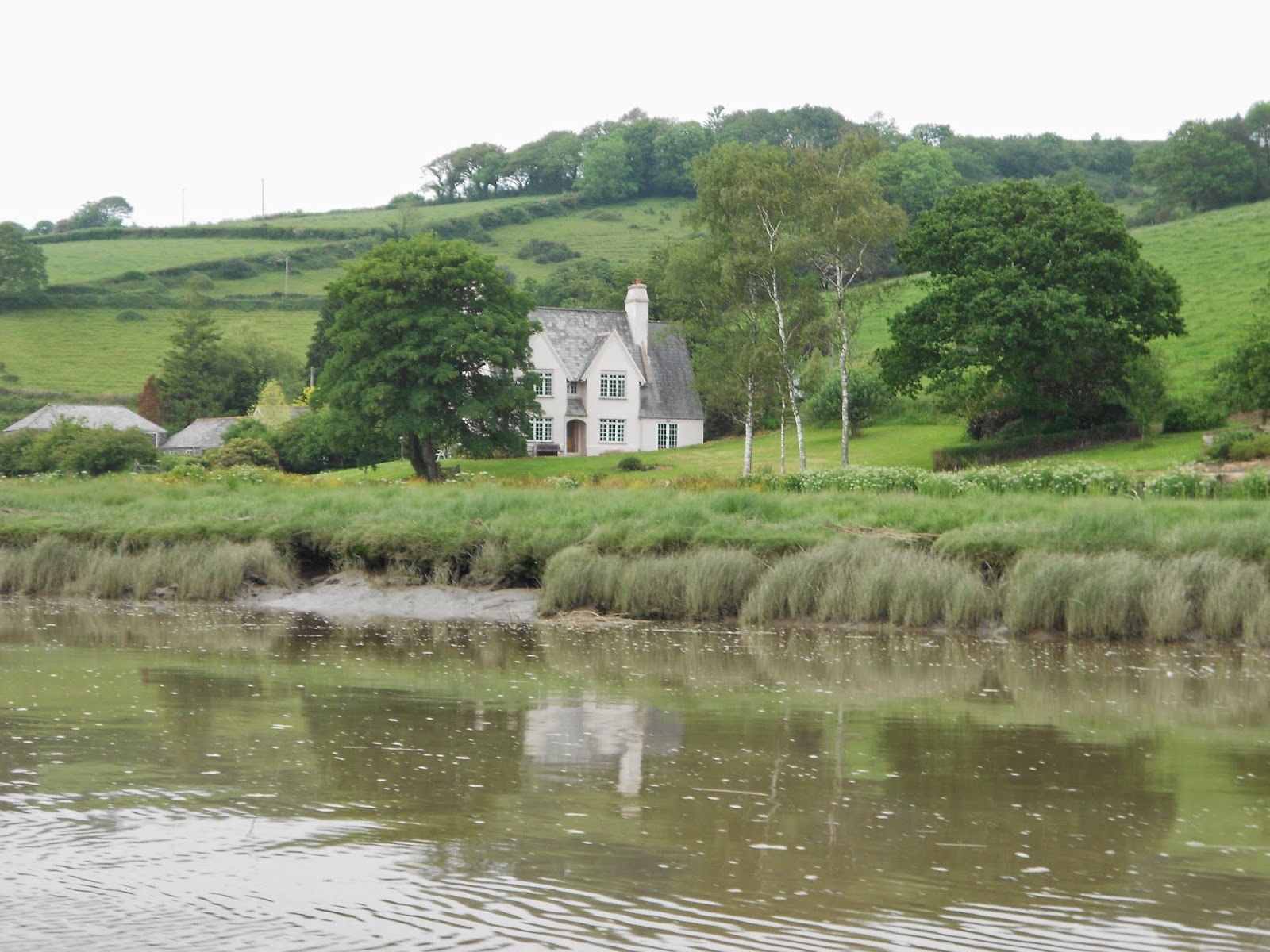'She what must be obeyed' has invested in a new fitness routine for us. An inflatable double canoe!
It had its maiden voyage today out at Salcombe. We forgot to fit the skeg in our haste to try out said inflatable but actually it went better than I thought. We managed to pack a rucksack in the back with towels etc. It takes some pumping up, so we invested in an electrical pump plugged into the cig socket in the car. Its slower than the hand pump, around 10 minutes, but I am less likely to have a heart attack!
Paddling across the creek from the Batson boat ramp, we managed to navigate across the fairway without incident. Big silver bass and mullet passed beneath us. I have to say pulling up on the golden sand beach with turquoise waters melding into deep blue, it was an impressive sight. Beyond were the pastel colours of the houses of Salcombe on the hill slope rising up the plateau of the South Hams.
Boats passed to and fro; the water taxi plied a busy trade between the two banks ferrying families over to the East Portlemouth Beaches. 'Two lattes and a read of the Times' later, lunch disappeared and we lay on the beach propped up by the inflatable. A wonderful 24C with a light breeze and wonderful blue skies.
It was turning out to be a great day until it was cut short by our daughter who was in a panic in a car park in Plymouth. A lot of liquid was gushing out the bottom of her car......'what should I do Dad?'
'What indeed'? I could think of several suggestions!
Sitting in a multi-storey car park for an hour and a half waiting for the AA........wasn't one of them!
It had its maiden voyage today out at Salcombe. We forgot to fit the skeg in our haste to try out said inflatable but actually it went better than I thought. We managed to pack a rucksack in the back with towels etc. It takes some pumping up, so we invested in an electrical pump plugged into the cig socket in the car. Its slower than the hand pump, around 10 minutes, but I am less likely to have a heart attack!
Paddling across the creek from the Batson boat ramp, we managed to navigate across the fairway without incident. Big silver bass and mullet passed beneath us. I have to say pulling up on the golden sand beach with turquoise waters melding into deep blue, it was an impressive sight. Beyond were the pastel colours of the houses of Salcombe on the hill slope rising up the plateau of the South Hams.
Boats passed to and fro; the water taxi plied a busy trade between the two banks ferrying families over to the East Portlemouth Beaches. 'Two lattes and a read of the Times' later, lunch disappeared and we lay on the beach propped up by the inflatable. A wonderful 24C with a light breeze and wonderful blue skies.
It was turning out to be a great day until it was cut short by our daughter who was in a panic in a car park in Plymouth. A lot of liquid was gushing out the bottom of her car......'what should I do Dad?'
'What indeed'? I could think of several suggestions!
Sitting in a multi-storey car park for an hour and a half waiting for the AA........wasn't one of them!

















































































